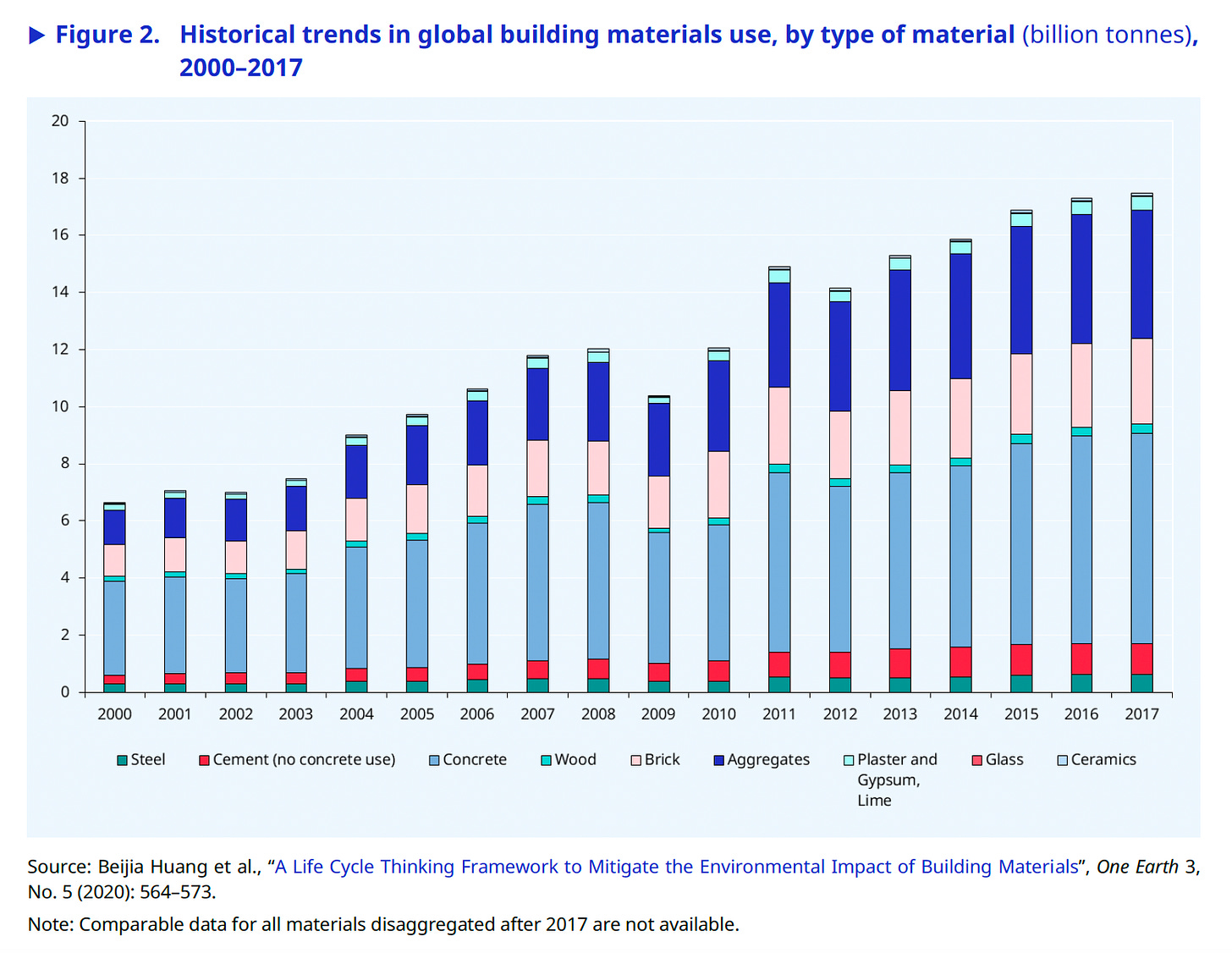
Recently the International Labor Organization has honed in on the enormous “building materials” sector: a sector that’s set for momentous growth as urban areas - particularly in Asia and Africa - expand, and at the same time a sector that needs to undergo dramatic transformations to curb its resource-intensive, carbon-emitting footprint.
These transformations in turn have implications for formal and informal workers throughout building materials’ complex supply chains. An ILO context-setting report explores the intersections between building materials and the climate, technological shifts, and the world of work.
It introduces building materials as falling into three groups: “natural/organic building materials, such as stone and wood; inorganic building materials, including cement, ceramics, lime, gypsum and steel; and composite materials, such as engineered wood”. Their properties and characteristics, as the report puts it, “are determinant in defining the physical qualities of the construction itself, as well as the construction method, equipment and skills required to develop it.”
The report was developed in advance of a technical meeting of the ILO (a tripartite body of governments, unions and employers) which then adopted recommendations on decent work and just transition in the industry.
The materials used for buildings and infrastructure have human and planetary consequences, often through long and complex supply chains: rife with challenges, and calling out for innovation.

*****************
Through 2024, It’s Material is sharing one use of the word “material” each week, on Tuesdays


